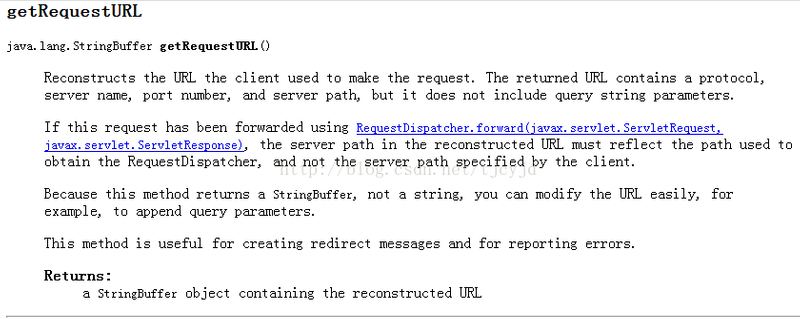欢迎扫码加入Java高知群交流

公司之前用的是http,但是出于苹果app审核和服务器安全性问题,要改为https,我们公司用的是沃通的ssl,按照沃通的官方文档提供的步骤完成服务器的配置。 架构上使用了 Nginx +tomcat 集群, 且nginx下配置了SSL,tomcat 没有配置SSL,项目使用https协议。

配置成功后明明是https url请求,发现 log里面,tomcat获取scheme的时候,一直是http,而不是想像中的https
0415 16:01:10 INFO (PaymentInterceptor.java:44) preHandle() - requestStringForLog: {
"request.getRequestURL():": "http://m.xxx.com/payment/paymentChannel?id=212&s=a84485e0985afe97fffd7fd7741c93851d83a4f6",
"request.getMethod:": "GET",
"s": ["a84485e0985afe97fffd7fd7741c93851d83a4f6"]
request.getRequestURL() 输出出来的 一直是
http://m.xxx.com/payment/paymentChannel?id=212&s=a84485e0985afe97fffd7fd7741c93851d83a4f6
但是浏览器中的URL却是
https://m.xxx.com/payment/paymentChannel?id=212&s=a84485e0985afe97fffd7fd7741c93851d83a4f6
下面我们进一步研究发现,java API上写得很清楚:
getRequestURL():
Reconstructs the URL the client used to make the request.
The returned URL contains a protocol, server name, port number, and server path,
but it does not include query string parameters.
也就是说, getRequestURL() 输出的是不带query string的路经(含协议,端口,server path等信息).

并且还发现
request.getScheme() //总是 http,而不是实际的http或https
request.isSecure() //总是false(因为总是http)
request.getRemoteAddr() //总是 nginx 请求的 IP,而不是用户的IP
request.getRequestURL() //总是 nginx 请求的URL 而不是用户实际请求的 URL
response.sendRedirect( 相对url ) //总是重定向到 http 上 (因为认为当前是 http 请求)
那么解决方案有没有呢,答案是肯定的,其实解决方法非常的简单,只需要分别配置一下 Nginx 和 Tomcat 就好了,而不用从程序代码上修改。
1.配置nginx的转发项,配置文件为proxy.conf,内容如下:
proxy_connect_timeout 300s;
proxy_busy_buffers_size 128k;
proxy_set_header Accept-Encoding '';
proxy_set_header Referer $http_referer;
proxy_set_header Cookie $http_cookie;
proxy_set_header Host $host;
proxy_set_header X-Real-IP $remote_addr;
proxy_set_header X-Forwarded-For $proxy_add_x_forwarded_for;
proxy_set_header X-Forwarded-Proto $scheme;
其中的
proxy_set_header X-Forwarded-Proto $scheme;起到了关键性的作用。
2.配置tomcat,配置文件为server.xml,内容如下:
xml version="1.0" encoding="UTF-8"?>
<Server port="8006" shutdown="SHUTDOWN">
<Listener className="org.apache.catalina.core.JreMemoryLeakPreventionListener"/>
<Listener className="org.apache.catalina.mbeans.GlobalResourcesLifecycleListener"/>
<Listener className="org.apache.catalina.core.ThreadLocalLeakPreventionListener"/>
<Listener className="org.apache.catalina.core.AprLifecycleListener"/>
<Resource name="UserDatabase" auth="Container"
type="org.apache.catalina.UserDatabase"
description="User database that can be updated and saved"
factory="org.apache.catalina.users.MemoryUserDatabaseFactory"
pathname="conf/tomcat-users.xml" />
<Service name="Catalina">
protocol="org.apache.coyote.http11.Http11AprProtocol"
connectionTimeout="20000"
disableUploadTimeout="true"
useBodyEncodingForURI="true"
<Engine name="Catalina" defaultHost="localhost">
<Valve className="org.apache.catalina.valves.RemoteIpValve"
remoteIpHeader="X-Forwarded-For"
protocolHeader="X-Forwarded-Proto"
protocolHeaderHttpsValue="https"/>
<Realm className="org.apache.catalina.realm.LockOutRealm">
<Realm className="org.apache.catalina.realm.UserDatabaseRealm"
resourceName="UserDatabase"/>
其中关键的语句为:
remoteIpHeader="X-Forwarded-For"
protocolHeader="X-Forwarded-Proto"
protocolHeaderHttpsValue="https"/>
配置双方的 X-Forwarded-Proto 就是为了正确地识别实际用户发出的协议是 http 还是 https。
配置完成之后以下的请求访问
request.getScheme() 、request.isSecure() 、request.getRemoteAddr()、request.getRequestURL() 、response.sendRedirect( 相对url )
就都变为正确的结果了,就像用户在直接访问 Tomcat 一样。
欢迎扫码加入Java高知群交流




